
A-Frame You’ve Met Your Match: This 50-Year-Old Mountain Cabin Thrives in Snow
Step inside one of the earliest prototypes of the Western American mountain cabin.
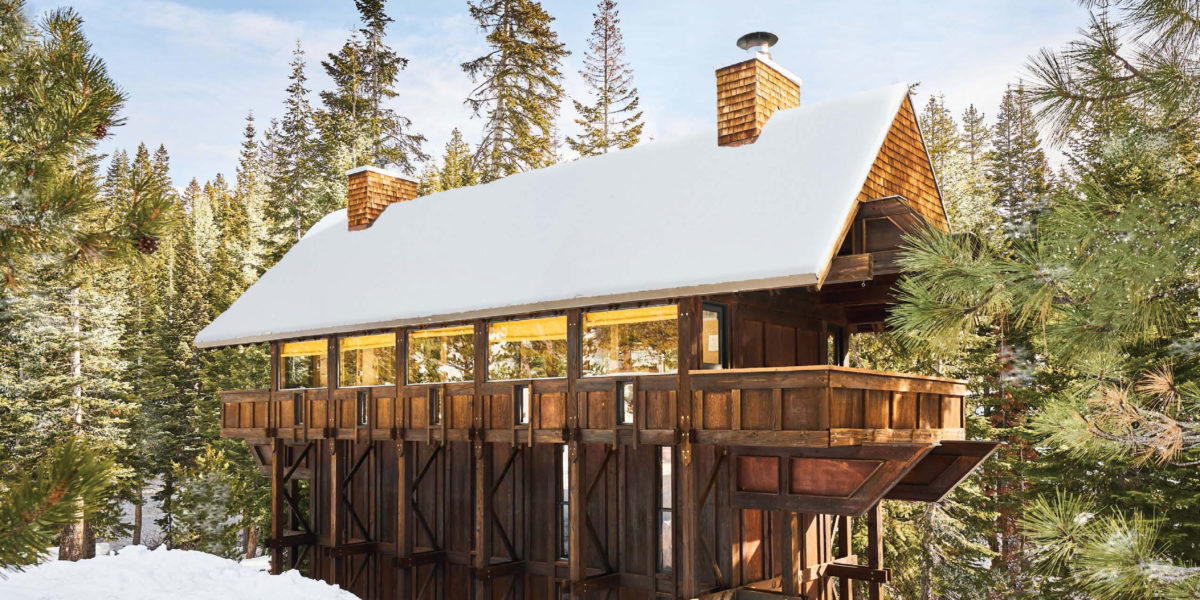
In the winter of 1969, 12 feet of snow blanketed the High Sierra mountains in Alpine County, a sparsely populated corner of California wedged between the eastern edge of Yosemite and Lake Tahoe. Canadian architect Donald MacDonald had just completed his first mountain house in the area, which he called The Ark, with the help of a crew of Norwegian shipbuilders who made the trek from Marin County. The home’s unique structure was intended to function like a tree whose sloping branches allow gravity to shed the snow load before they break under its weight.
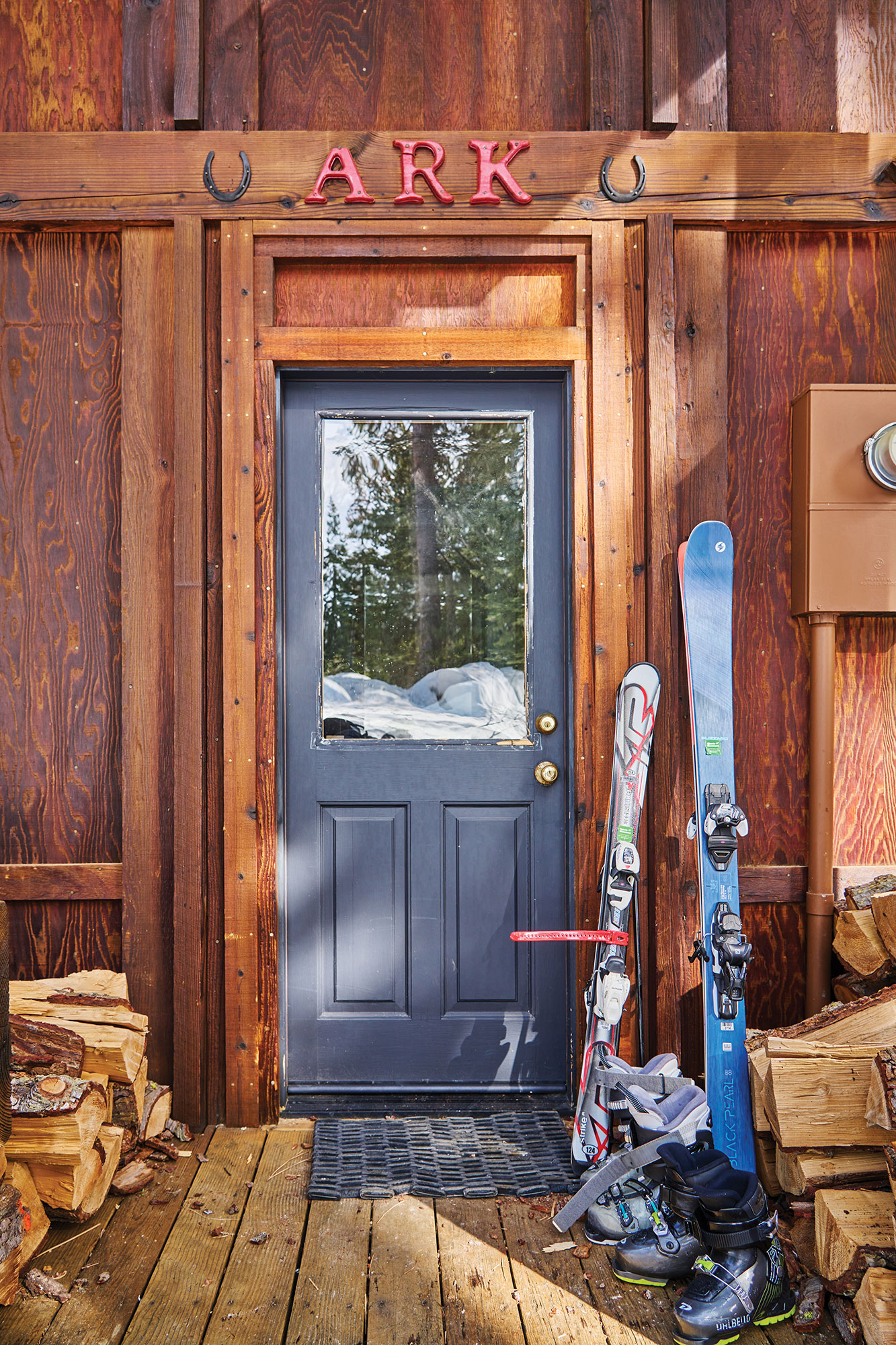
Thomas J. Story
MacDonald was teaching architecture at the University of California, Berkeley when he was hired to design a handful of the first homes in a nascent resort community, Bear Valley, near the Ebbetts Pass on a remote section of the Pacific Crest Trail. A local ranching family, the Orvises, had purchased hundreds of acres in the area for cattle grazing and later built a family summer ranch on the land. They had a vision to transform 400 of those acres into a resort community with a ski mountain, Mount Reba, and a small, private lake. About 20 houses were commissioned in that initial phase of development, many of them built with the flat roof lines that were popular at the time. The staggering snowfall would be a dramatic, and definitive, first test for MacDonald’s vision—and for The Ark.
“My friend David McTaggart, who went on to run Greenpeace, made the introduction. I grew up in Edmonton, so maybe I was the only guy they could find who had any experience building a house in the snow,” says MacDonald, who at 87 is still a practicing architect in San Francisco, and is best known for his work on long-span bridges, including the design for the $6 billion Bay Bridge rehabilitation. “The snow was so high that season that you could walk onto the second-floor deck.”
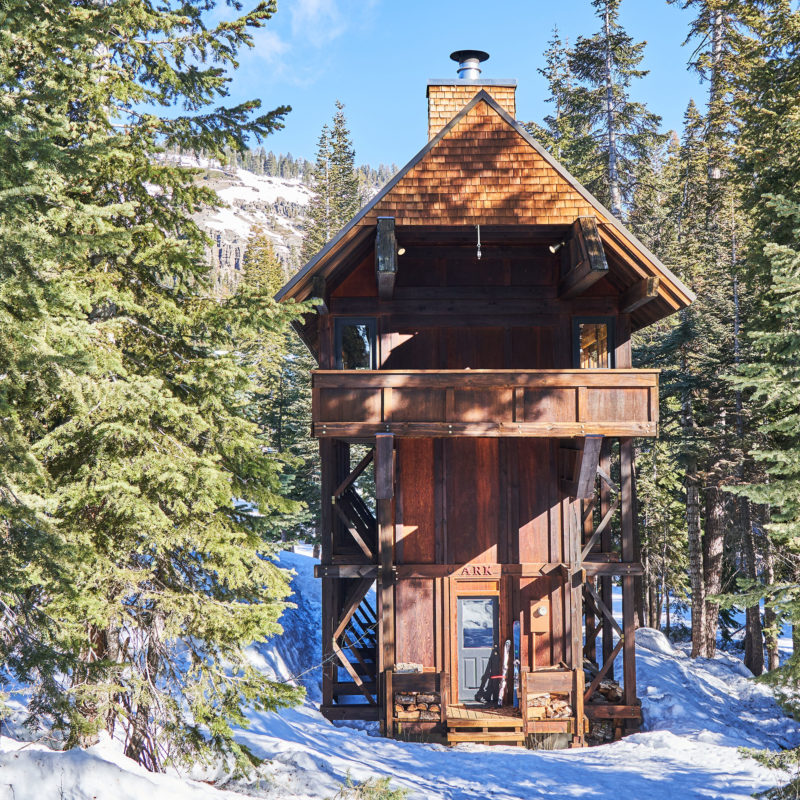
Thomas J. Story
Those flat-roof structures didn’t fare so well.
“They collapsed, but The Ark was fine,” MacDonald says. “That house was the first of its kind in the West.”
MacDonald built another home in the community, called The Snowflake, that had a five-point roof with an equally steep pitch, plus a few others. He was so fond of The Ark that he wanted to keep it for himself. But another interested family, the Bargers, came in and “made me an offer I couldn’t refuse,” says MacDonald. “I must have built 500 more ski houses after that, around Taos, Mammoth, Red River, and Crested Butte.”
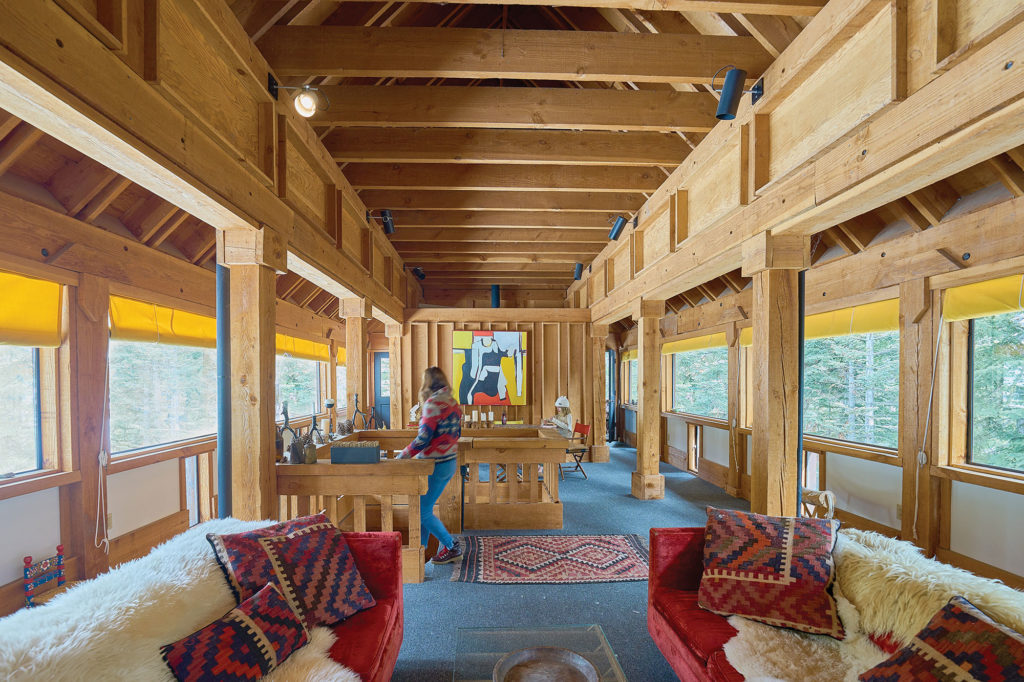
Thomas J. Story
Made from local materials like white fir siding and cedar shingles, and nestled among the trees with little disruption to the natural landscape, it was sustainable before sustainability was a consideration. The house was sited to take full advantage of the views and place the entrance at the sunniest spot. The warm afternoon rays melted away the snow pack and cleared the path to the door. The utilities were positioned indoors, to protect them from the elements. And the layout was inverted, so the four bedrooms with rough-hewn bunks were on the lower levels and the main living area and kitchen, with its large windows and two decks, were on the top floor, and felt perched in the treetops.
MacDonald was pleased to hear that the house was still standing, still in the Barger family, and so well preserved that it’s barely changed at all.
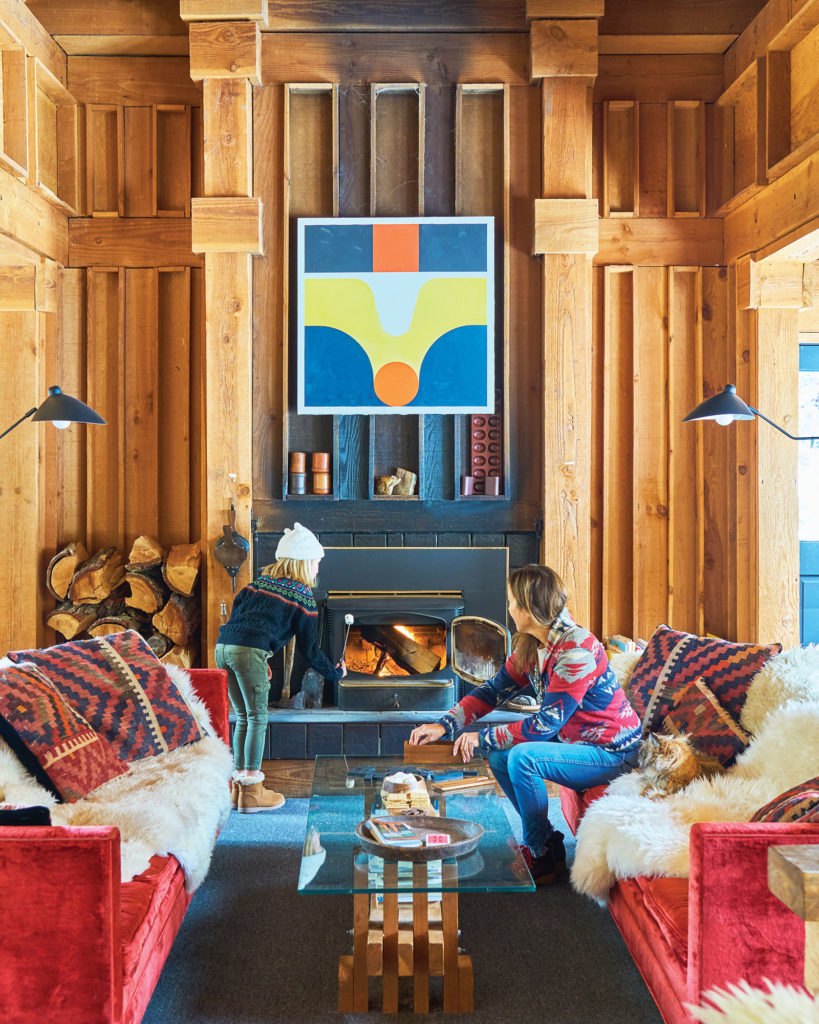
Thomas J. Story
“The house is like a time capsule,” says Blythe Barger, who, with her sisters Sarah Jane and Molly, is shepherding the family house into its sixth decade. “We replaced the shingled roof with metal and upgraded some of the systems, but the decor, the board games, and the kitchen are exactly the same.”
Barger regularly makes the four-hour trip from her home in Marin to reconnect with her sisters and their children, who have grown attached to the place in the best way. “The best part was that you could ski right back to the house at the end of the day,” Barger says. “My brother and sisters were several years older than me, so I always remember that they were able to take this challenging, black diamond run back to the house. It gave me something to strive for, to learn to ski well enough to do it with them. And now my daughter Teddy, who’s 8, is working on it, too.”
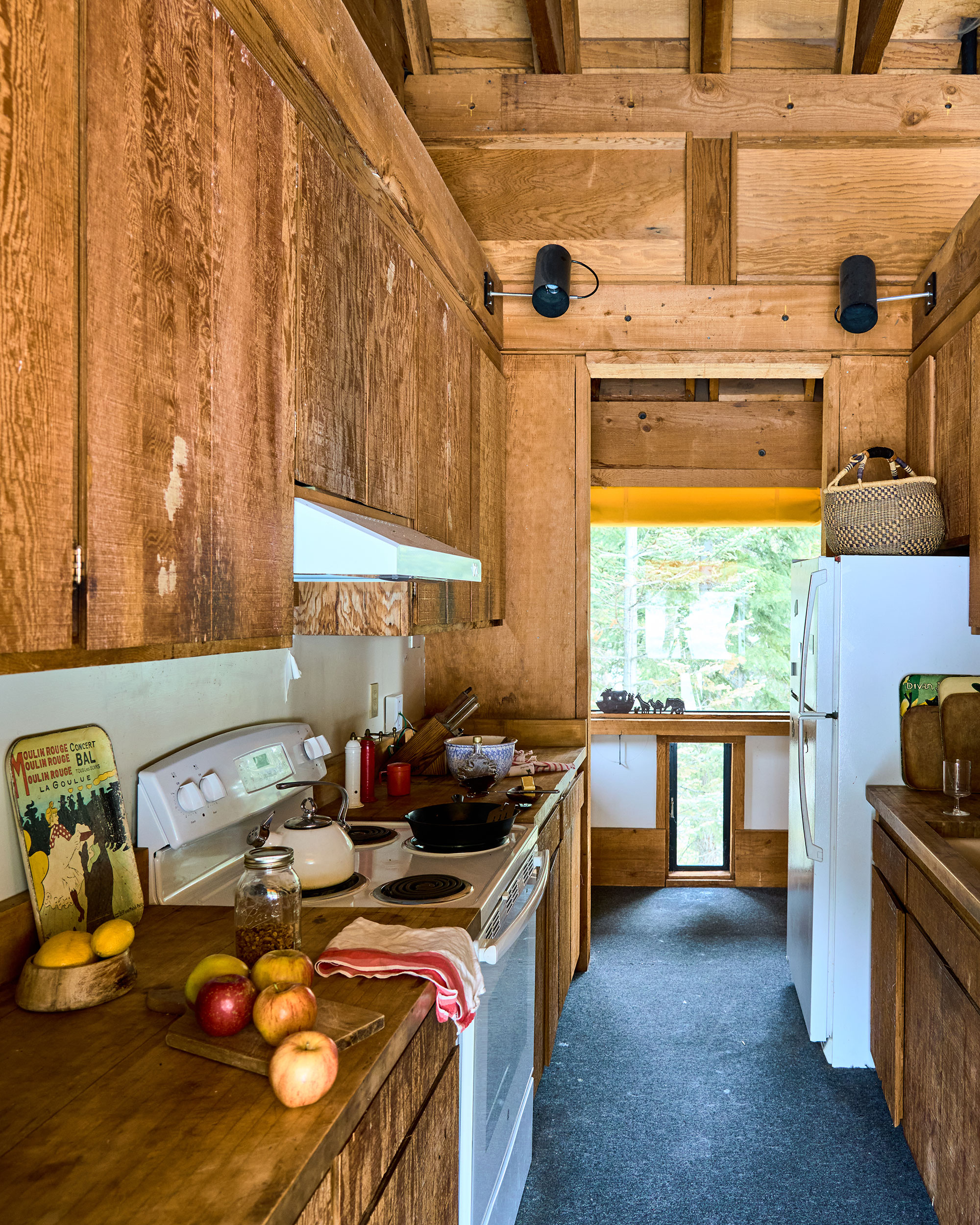
Thomas J. Story
The architectural vernacular of the modern Western American ski house can be traced to the work of a couple of architects. While traditional winter hamlets like Telluride leaned Victorian, and Vail adopted the Alpine, or Tyrolean style, buildings, Californians were interested in something new. Henrik Bull, a New York architect with Norwegian heritage, is credited with creating the rough-hewn aesthetic of Lake Tahoe’s early buildings. A couple of Bull’s houses ended up on the cover of Sunset in the late ’50s and early ’60s. And MacDonald got his start here, in Bear Valley, a low-key family enclave, population 91, that’s tucked away in the Stanislaus National Forest.
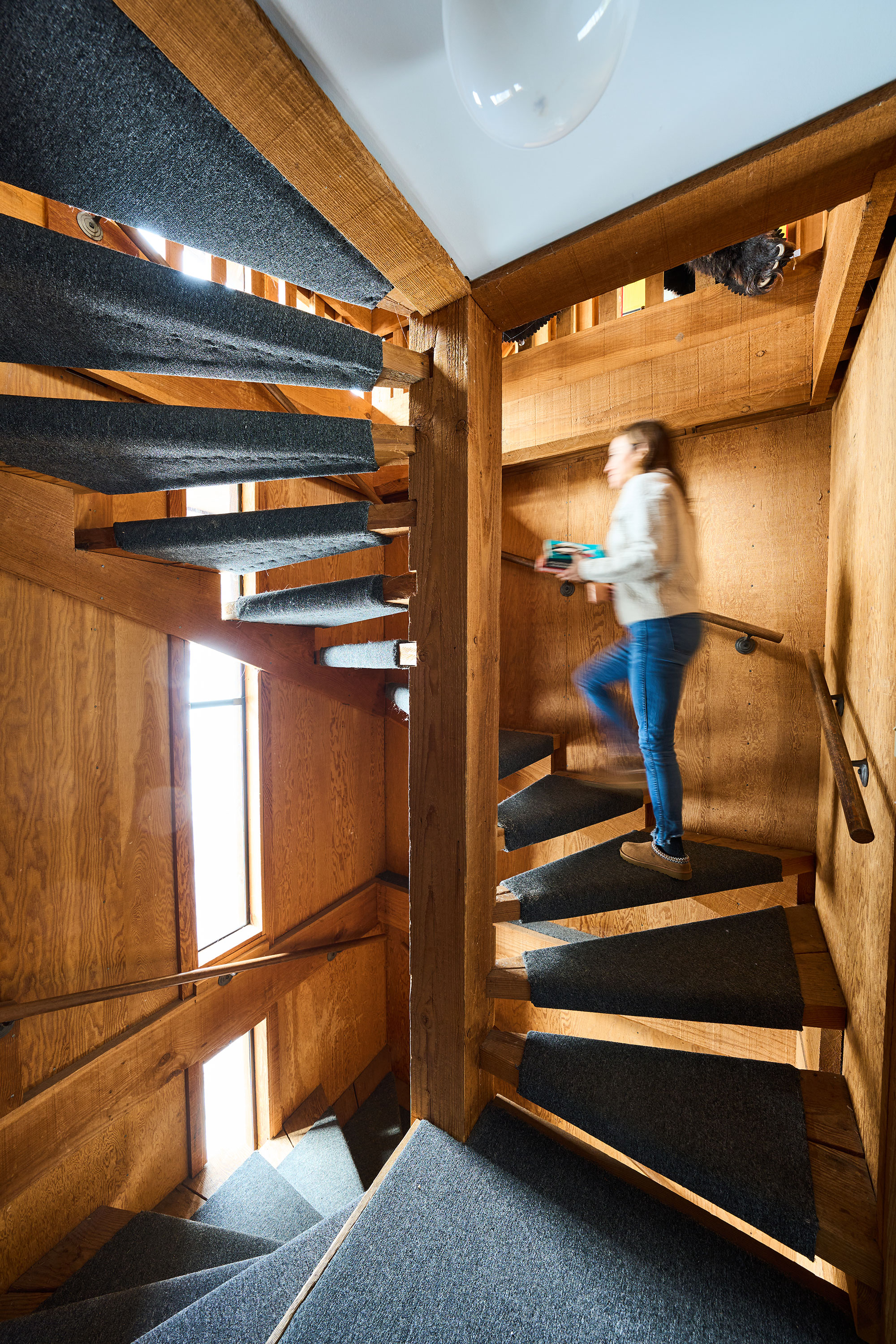
Thomas J. Story
What’s unique about Bear Valley is that it’s one of a handful of snowbound communities in North America, meaning its unplowed roads make the dozens of houses in the community accessible only by snowmobile or Sno-Cat for several weeks a year. With only nine chairlifts and 75 trails on the mountain, covering close to 1,700 skiable acres, it’s large enough to provide some adventure but small enough to keep away the intense crowds. For a few years in the late ’60s and early ’70s, it was an exclusive hideaway for well-to-do families, including actor Lloyd Bridges and his wife, Annie, looking for a quiet escape.
“I remember going down to the lake in the summer when I was very little and seeing [Lloyd’s children] Jeff and Beau Bridges there,” says Barger. “But I still didn’t understand why it was so special until I was much older. Every Friday, when we would pile into the car and start that long, winding drive on Highway 4 to the middle of nowhere, I would be carsick and wondering why my parents didn’t buy a house in Tahoe.”
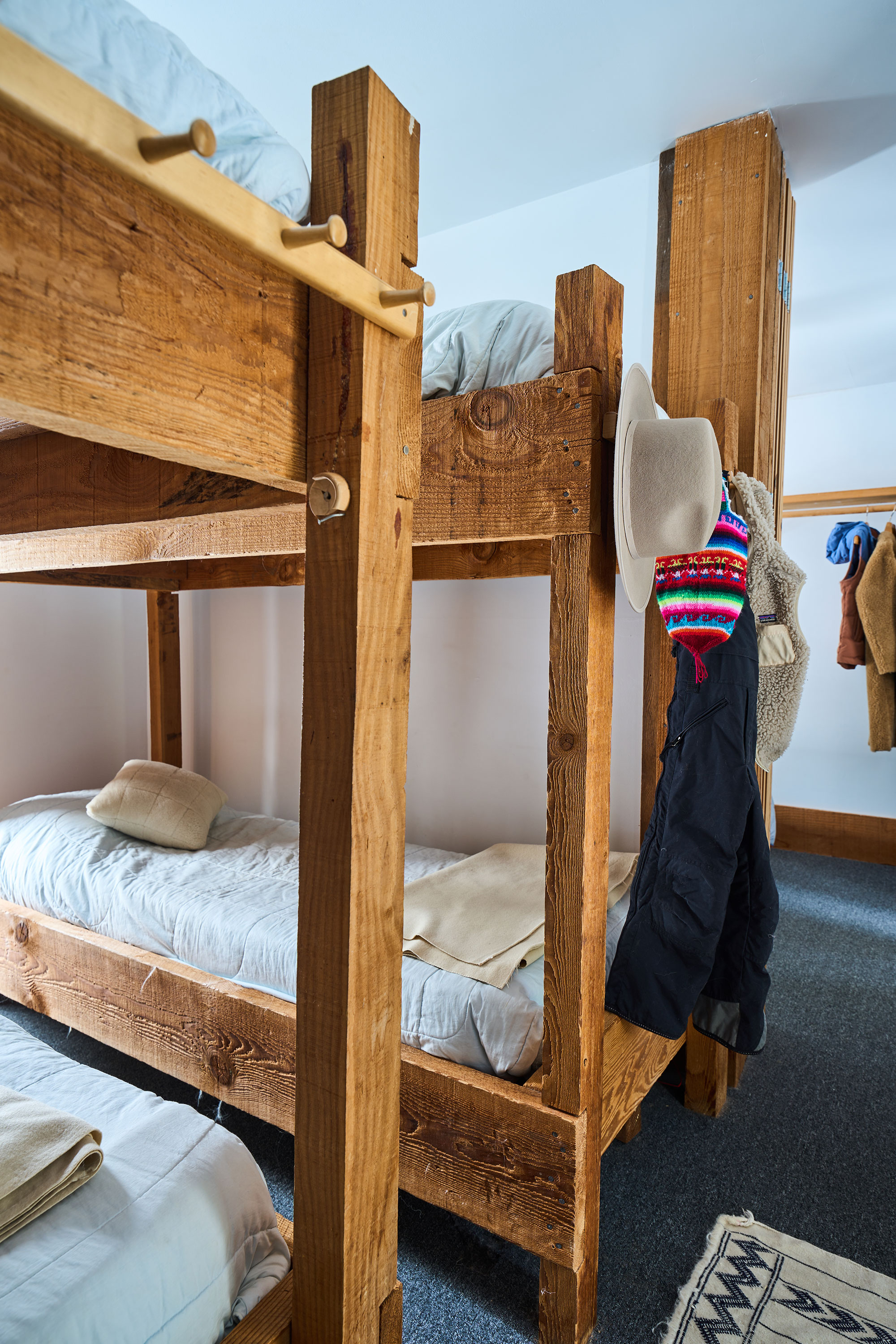
Thomas J. Story
Its remoteness, and the desire of its residents to keep development to a minimum and lake access restricted to homeowners, have helped maintain its relative secrecy. When Barger visited the house in the summer of 2021, there were more people swimming in the lake, mountain biking, and exploring the hiking trails than she’d ever seen, thanks to a coronavirus-related spike in vacation rentals. Even today, services are minimal. There’s a single market with basic provisions, two restaurants with bars, and a pizza parlor operating with limited hours for residents and guests at the rustic resort lodge. People hungry for a lively après-ski scene will not find it here. In the summer, mountain biking, a small music festival, and 15 glamping tents are the draw. Tahoe, it is not. Now that Barger, a film producer and a busy single mother, has introduced the mountain to Teddy, she understands the appeal of the community, and the house, completely.
“I remember that I could only invite my most intrepid friends with me to the house for the weekend. We never knew if the pipes would be frozen, and there was this whole process of getting there, unloading all of our provisions onto the Sno-Cat, and making the trek up the hill,” she says. “But once you’re there, you make a big meal together, you ski all day and come home to snuggle in front of the fire and make s’mores.”
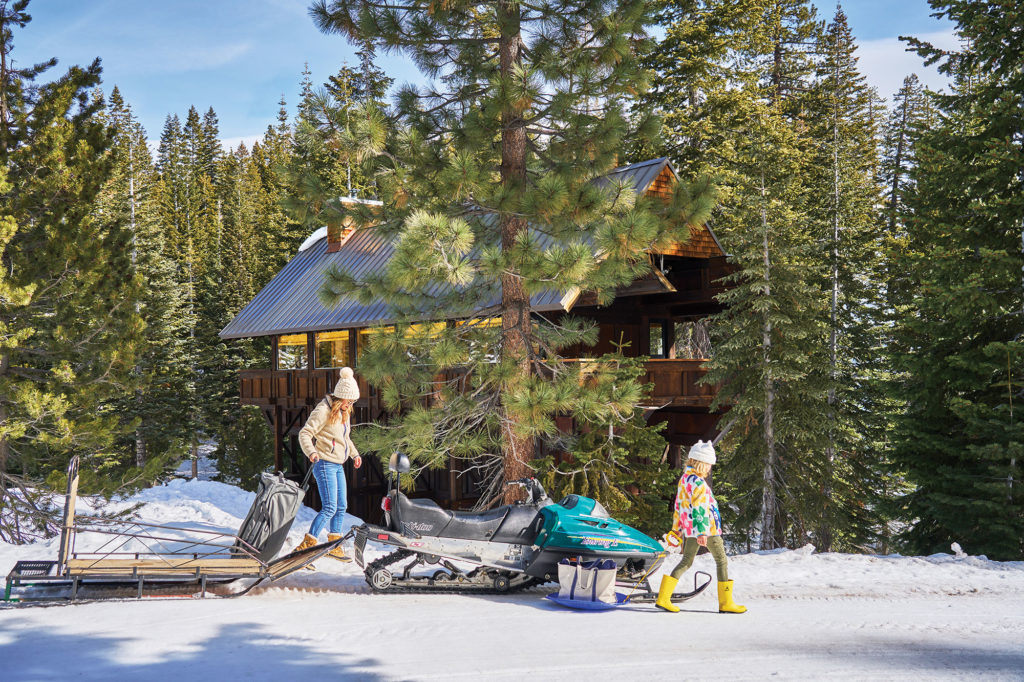
Thomas J. Story
There have been plans to build an additional lift that connects the residences to the base lodge for years, though they’ve never taken hold. One gets the sense that the people who know and love the community are hesitant to invite larger crowds to their hideaway, through modernized accommodations or even a Sunset magazine story. Some secrets are just too good to be kept.
“It’s simple and unspoiled,” Barger says. “None of that has changed. I don’t think it ever will.”
Read the Current Issue Here!
Get one year of Sunset—and all kinds of bonuses—for just $29.95. Subscribe now!
